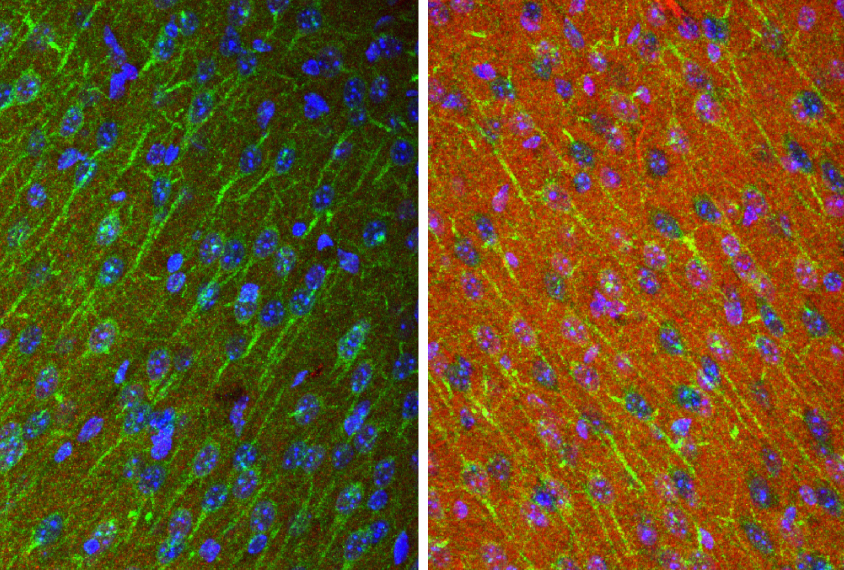
Cancer drug shows promise for treating some forms of autism
A low dose of a drug used to treat lymphoma may ease social problems in some forms of autism.
A low dose of a drug used to treat lymphoma may ease social problems in some forms of autism, a mouse study suggests1.
Specifically, the drug might be beneficial for children with autism who carry mutations that affect chromatin, the coiled complex of DNA and protein.
The mice in the study lack part of SHANK3, a gene mutated in up to 2 percent of people with autism. The mice have several features reminiscent of autism, including anxiety, repetitive behaviors and social problems.
A low dose of the drug, romidepsin, alters chromatin and normalizes social behavior in young SHANK3 mutants for at least three weeks, says lead researcher Zhen Yan, professor of physiology and biophysics at the State University of New York in Buffalo.
SHANK3 is one of several autism genes that function at the synapse, the junction between neurons. But this is the first evidence that mutations in the gene affect chromatin.
“It is quite surprising and unexpected,” says Craig Powell, professor of neurology at University of Texas Southwestern Medical Center in Dallas, who was not involved in the study.
Mouse sniffs:
Yan and her colleagues injected SHANK3 mice aged 5 to 6 weeks with romidepsin once daily for three days.
Untreated SHANK3 mice show less of a preference for another mouse over an object, compared with controls; romidepsin normalizes this preference. This effect on their social behavior persists for about 21 days.
Romidepsin has the same effect on social skills in another strain of mice that carry mutations in both copies of SHANK3, the researchers found. This consistency is “striking and provides confidence regarding potential applications of their findings,” Powell says.
The researchers also tested an antidepressant and three antipsychotic drugs, two of which — risperidone and aripiprazole — are approved for treating irritability associated with autism. None of these drugs alter the mice’s social behavior.
Romidepsin does not improve motor skills or ease anxiety in the mice, however. It also has a smaller and shorter-lived effect on social behavior in adult mice than in the juveniles. This finding suggests the drug might work only in children, Yan says.
The drug blocks a family of enzymes called HDACs, which remove acetyl tags from histones, the protein component of chromatin. SHANK3 mice have too much HDAC2 and, as a result, fewer acetyl groups in brain tissue than controls do; romidepsin normalizes the number of acetyl groups, the researchers found. The results appeared 12 March in Nature Neuroscience.
Directly blocking expression of HDAC2 in the mutants also restores their social interest, the researchers found — suggesting that SHANK3’s effect on behavior is through this enzyme.
Missing link:
The study also revealed that SHANK3 binds to beta-catenin, another protein implicated in autism. The mutant mice have too much beta-catenin in the nucleus and too little at the synapse.
In the nucleus, beta-catenin binds near the HDAC2 gene, and may activate its expression. Boosting beta-catenin levels in control mice increases HDAC2 levels and makes the mice less social, the researchers found. This finding strengthens the link between SHANK3 mutations and HDAC2.
Other mutations associated with autism may dampen, rather than boost, the expression of enzymes such as HDAC2, says Yong-Hui Jiang, associate professor of pediatrics at Duke University in Durham, North Carolina. This means romidepsin’s effects on social behavior may only apply only to SHANK3 mutations. Jiang was not involved in the study but developed one of the mutant strains used in the work.
More research is needed to better understand how the increase in HDAC2 affects social behavior, says Alex Nord, assistant professor of neurobiology at the University of California, Davis, who was not involved in the study.
“I’m always amazed that these general histone deacetylation pathways can produce a specific behavioral effect but also don’t totally mess up behavior when you mess with them,” he says. “There’s a lot of unanswered questions in how these global changes to chromatin can have a very precise impact.”
Yan and her colleagues looked to see whether romidepsin alters gene expression in the mutant mice. They found that it boosts genes involved in signaling though the chemical messenger glutamate, which is also implicated in autism. It also increases levels of certain proteins needed for transporting molecules across cells.
The researchers are screening other compounds that alter histones in mouse models of autism. They hope to find a drug that works as well in adult animals as it does in juveniles.
References:
- Qin L. et al. Nat. Neurosci. Epub ahead of print (2018) PubMed
Recommended reading

New organoid atlas unveils four neurodevelopmental signatures

Glutamate receptors, mRNA transcripts and SYNGAP1; and more

Among brain changes studied in autism, spotlight shifts to subcortex
Explore more from The Transmitter

Psychedelics research in rodents has a behavior problem
Can neuroscientists decode memories solely from a map of synaptic connections?
